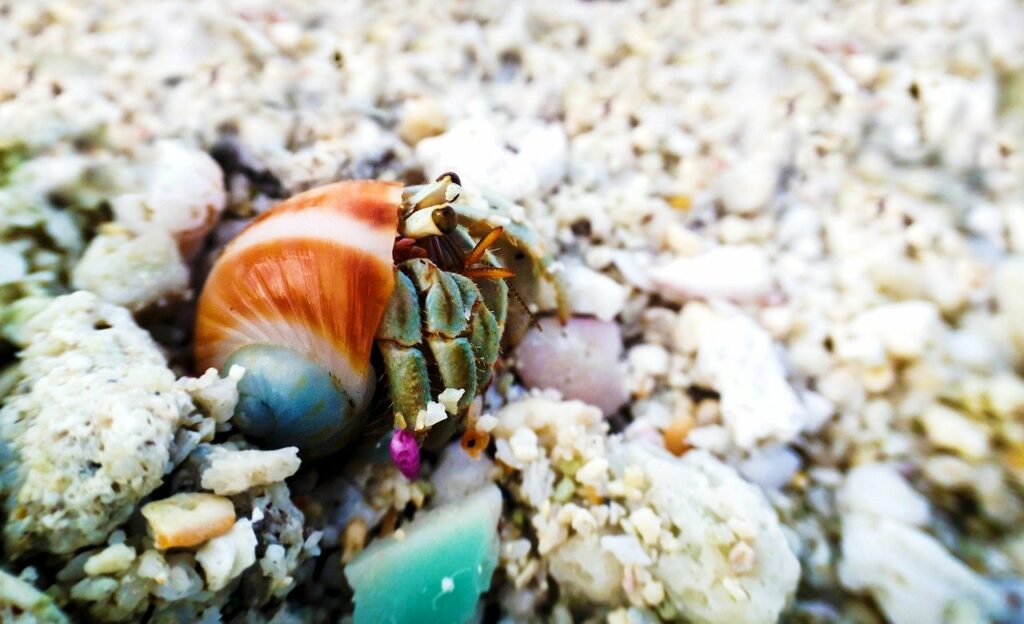As a hermit crab owner, providing a habitat that mimics their natural environment is key to keeping your pets healthy and happy. An essential part of recreating their native coastal climate is mixing up saltwater for them to bathe in and drink. While it may seem simple to make saltwater, there are some important steps to follow and ingredients to avoid in order to keep your crabs safe.
Getting the Right Supplies
To start, you’ll need:
- A clean container or tank to mix the saltwater
- Distilled or purified water – do not use untreated tap water
- Aquarium salt – specifically designed for marine life
- Optional water conditioner – removes chlorine and heavy metals
I recommend using distilled water rather than tap water. Tap water contains chlorine, fluorine and dissolved minerals that can be harmful to crabs over time. Distilled water gives you a clean slate to create perfect salty water.
Aquarium salts like Instant Ocean or Oceanic are formulated to match the salinity and mineral content of natural seawater. They dissolve easily and leave no residue. Do not use table salt – it has additives like iodine and anti-caking agents that are toxic to crabs.
Mixing the Saltwater
Making saltwater is as easy as combining and stirring the ingredients:
- Pour 1 gallon of distilled water into a clean container
- Add water conditioner if using and mix thoroughly
- Add 1/2 cup of aquarium salt
- Stir continuously until salt dissolves completely
- Allow to sit until water reaches room temperature
The ideal water temperature for hermit crabs is between 75-80°F Warmer or cooler water can shock their systems
Getting the Salinity Right
The salt-to-water ratio of 1/2 cup salt per gallon of water creates a salinity level safe for most crab species. This equals about 35 parts per trillion the same as their native ocean waters.
For freshwater crabs, cut the salt amount in half. For marine crabs, add a bit more. Watch your crabs’ behavior – if they avoid the water, reduce the salt. If their shells appear dry, increase it.
A hydrometer is a handy tool to precisely measure the water’s salinity. The ideal specific gravity is 1.021-1.025.
Maintaining Healthy Saltwater
Replacing evaporated water with fresh distilled water will gradually lower salinity. To maintain levels, make a new saltwater batch weekly. Scoop out and replace about 25% of the water to replenish salts and minerals.
Rinse containers thoroughly before remixing to remove any organic waste or algae growth. Keep an eye on water clarity and odor as signs it needs changing.
Adding live sand and filter media introduces beneficial bacteria to help purify the water. Pieces of coral also release essential elements and minerals into the water.
Offer Both Fresh and Saltwater
Providing both fresh treated water and mixed saltwater allows crabs to balance their needs. Fresh water is important for hydration. Saltwater enables them to keep their gills healthy and shells hardened.
Give them a choice by providing two water dishes – one fresh, one salty. Position them on opposite sides of the tank. Daily misting also boosts humidity.
With the right salt-to-water ratio and high quality ingredients, mixing up the perfect saltwater for your hermit crabs is easy. Pay close attention to their behaviors to ensure their water needs are fully met. Thriving crabs are happy crabs!

How to make seawater saltwater for your Hermit Crabs
FAQ
How to make salt water for your hermit crab?
Can hermit crabs live in saltwater tank?
What happens if a hermit crab does not have salt water?
How to make salt water for hermit crabs?
Let’s go through the essential steps involved in creating the perfect salt water for your hermit crabs. The water source you use to mix the salt water is crucial for the well-being of your hermit crabs. It is recommended to use dechlorinated water, such as distilled or reverse osmosis water.
What is marine salt mix for hermit crabs?
Marine salt mix is a popular choice among hermit crab owners for creating salt water. It is specifically formulated to mimic the natural salt water found in the ocean, which is essential for the hermit crabs’ overall health and survival.
What kind of water does a hermit crab need?
The salt water container should contain the appropriate salinity levels, while the fresh water container should be filled with dechlorinated water. This will ensure that the hermit crabs have access to both types of water they require.
Can a hermit crab drink distilled water?
If you’re not a fan of this idea, you can always go for distilled water or bottled spring water. Before you rush over to your cabinet and whip out the salt you’d normally use to make pasta, you must know that table salt isn’t safe to put in your hermit crab’s water. Because this salt contains iodide, it can be harmful to your little friend.
